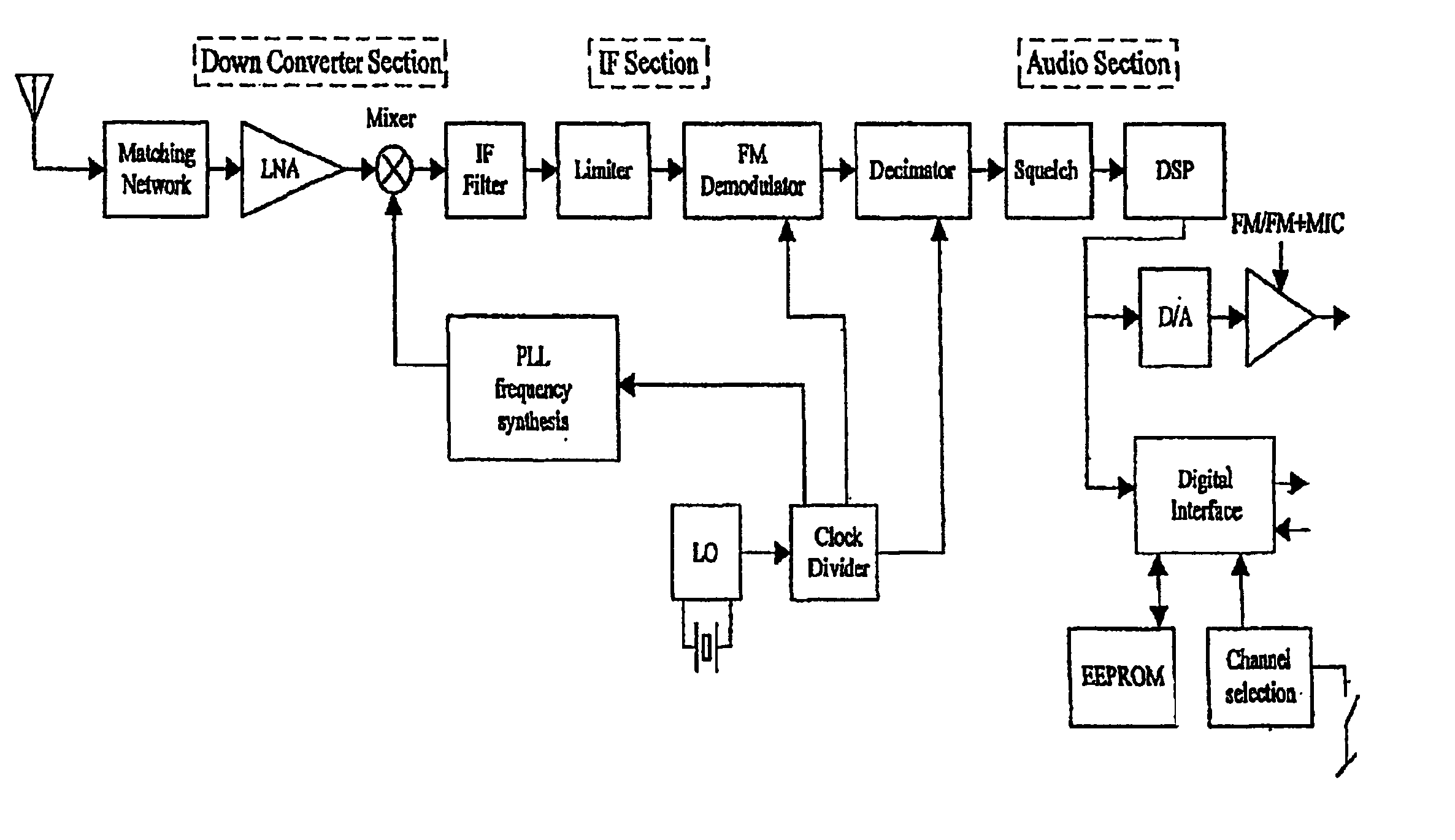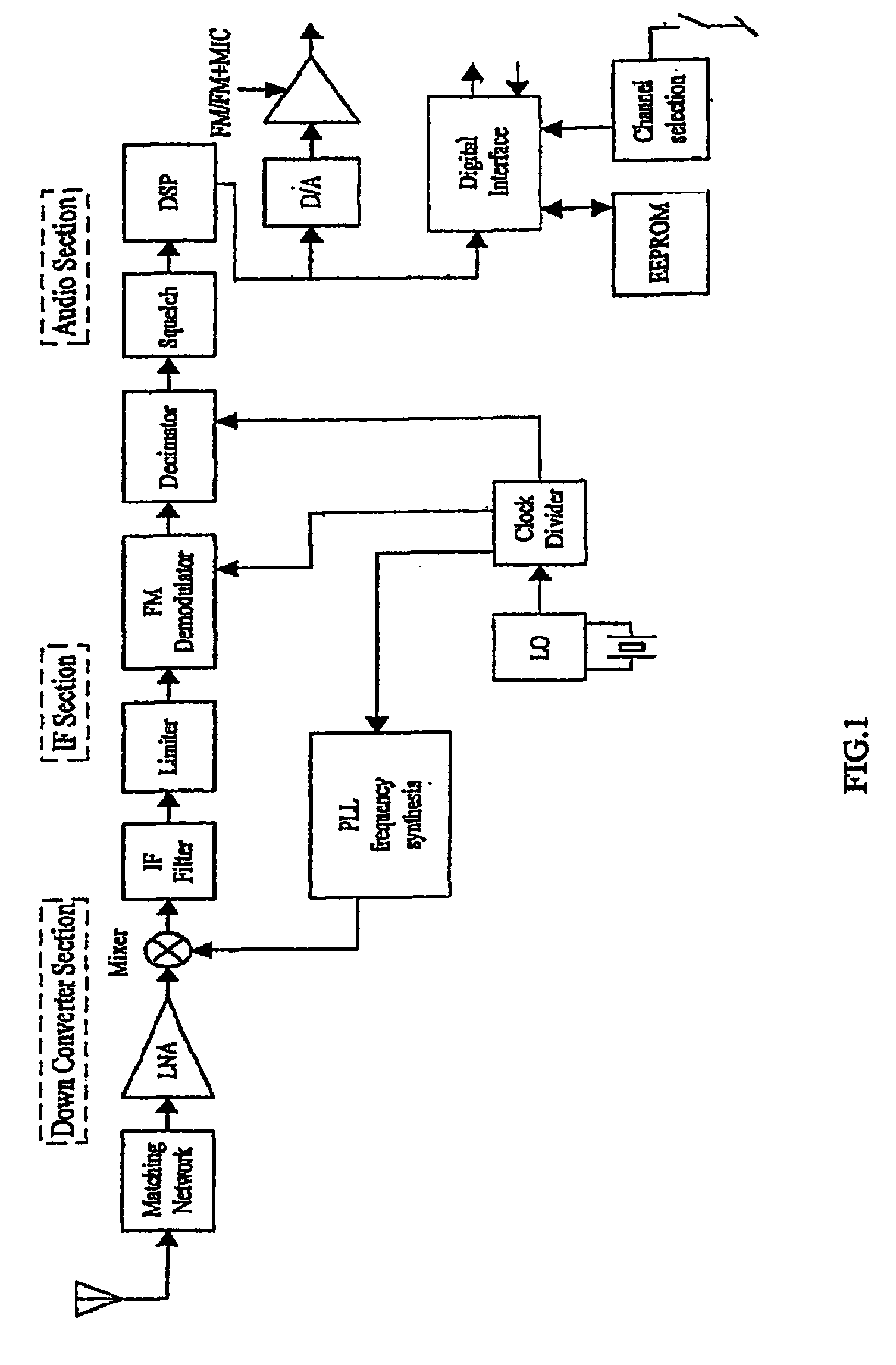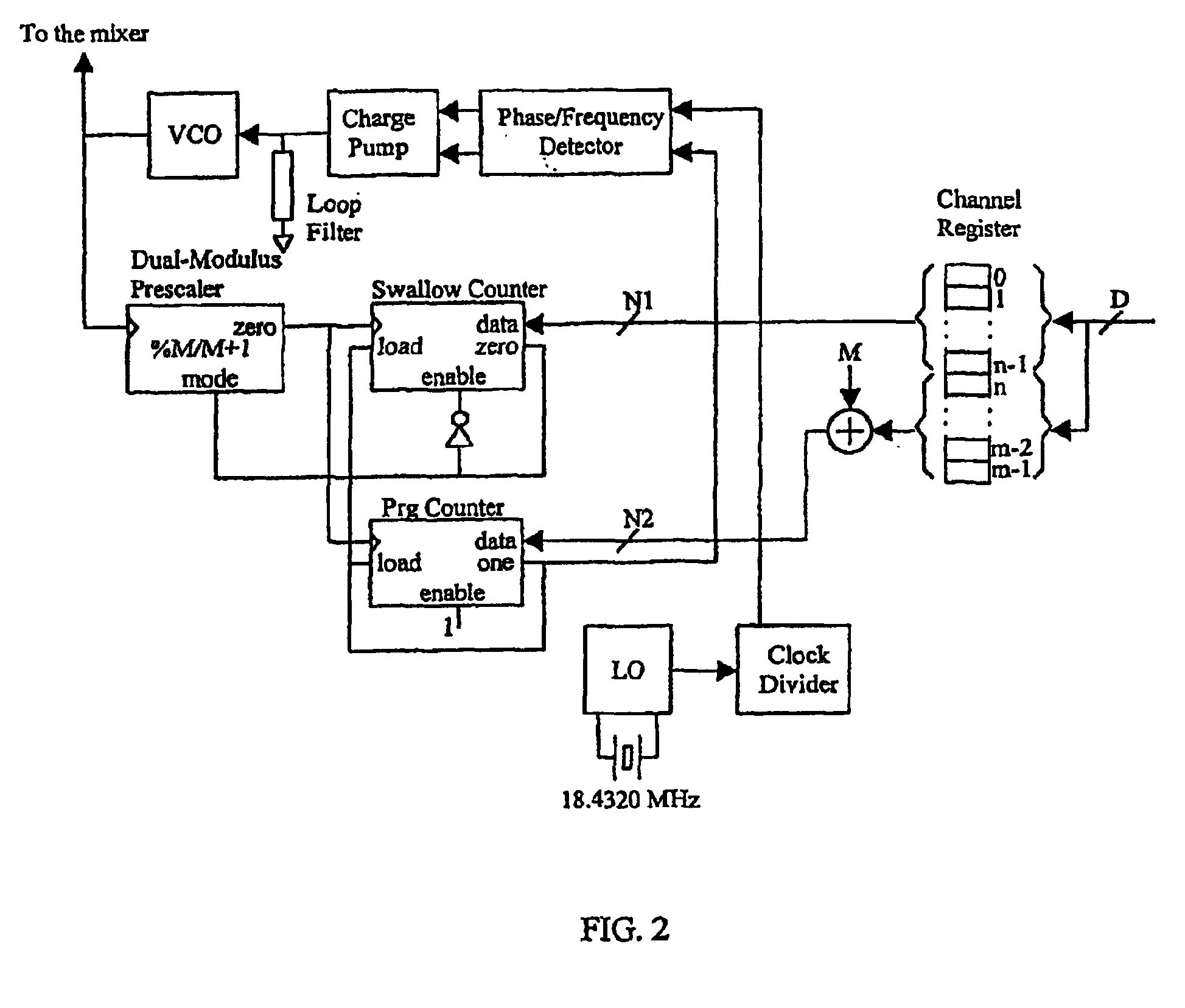Hearing aid with a radio frequency receiver
a radio frequency receiver and hearing aid technology, applied in the field of hearing aids, can solve the problems of difficult and often even impossible to incorporate a number of crystals corresponding to the desired receiving frequency, difficult and often even impossible to change a crystal, etc., and achieve the effect of facilitating channel selection
- Summary
- Abstract
- Description
- Claims
- Application Information
AI Technical Summary
Benefits of technology
Problems solved by technology
Method used
Image
Examples
Embodiment Construction
[0016]The analog RF signal is picked up by an antenna, which is connected to the on-chip LNA through an external matching network. The matching network is needed to make the RF receiver flexible towards different types of antennas, and to keep the current consumption down in the LNA.
[0017]The LNA (Low Noise Amplifier) is used to amplify the weak signal, which is picked up on the antenna Low noise is essential due to the low signal level at the input. The LNA wires the signal on to the mixer, which as the second input gets the desired channel frequency from the frequency synthesizer. The frequency synthesis system is described further in connection with FIG. 2.
[0018]The mixer mixes the signal down to an intermediate frequency (IF) of 35 KHz, which is the lowest intermediate frequency acceptable with the given audio bandwidth and frequency deviation. To support the wide range of synthesisable frequencies, the mixer and LNA needs wide operating conditions with regards to input frequenc...
PUM
 Login to View More
Login to View More Abstract
Description
Claims
Application Information
 Login to View More
Login to View More - R&D
- Intellectual Property
- Life Sciences
- Materials
- Tech Scout
- Unparalleled Data Quality
- Higher Quality Content
- 60% Fewer Hallucinations
Browse by: Latest US Patents, China's latest patents, Technical Efficacy Thesaurus, Application Domain, Technology Topic, Popular Technical Reports.
© 2025 PatSnap. All rights reserved.Legal|Privacy policy|Modern Slavery Act Transparency Statement|Sitemap|About US| Contact US: help@patsnap.com



